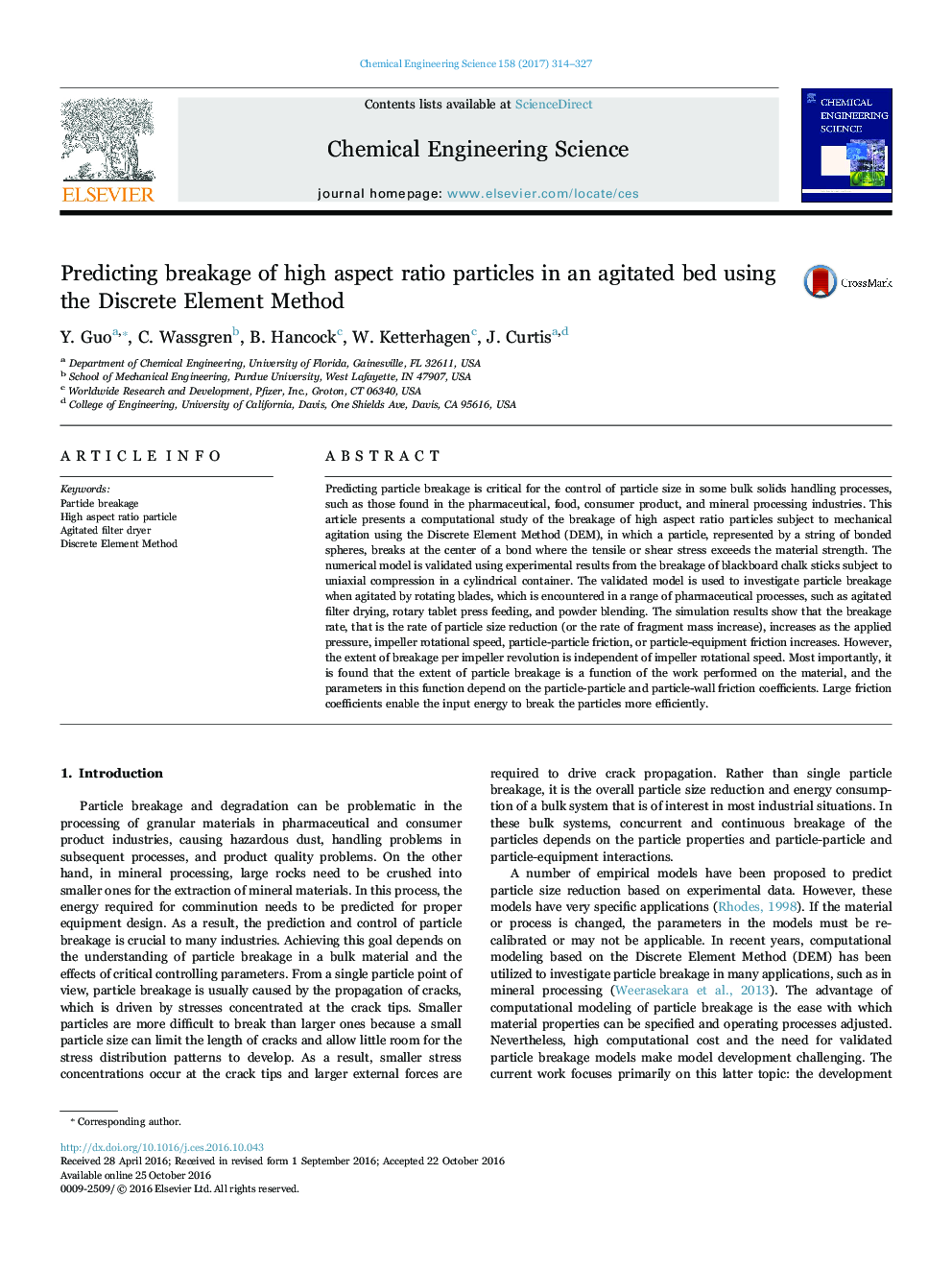| کد مقاله | کد نشریه | سال انتشار | مقاله انگلیسی | نسخه تمام متن |
|---|---|---|---|---|
| 6467894 | 1423261 | 2017 | 14 صفحه PDF | دانلود رایگان |
• A DEM model is experimentally validated to simulate rod-like particle breakage.
• High aspect ratio particle breakage under agitation is numerically investigated.
• Applied pressure and inter-particle and particle-wall frictions affect breakage.
• The extent of particle breakage is a function of work done on the material.
Predicting particle breakage is critical for the control of particle size in some bulk solids handling processes, such as those found in the pharmaceutical, food, consumer product, and mineral processing industries. This article presents a computational study of the breakage of high aspect ratio particles subject to mechanical agitation using the Discrete Element Method (DEM), in which a particle, represented by a string of bonded spheres, breaks at the center of a bond where the tensile or shear stress exceeds the material strength. The numerical model is validated using experimental results from the breakage of blackboard chalk sticks subject to uniaxial compression in a cylindrical container. The validated model is used to investigate particle breakage when agitated by rotating blades, which is encountered in a range of pharmaceutical processes, such as agitated filter drying, rotary tablet press feeding, and powder blending. The simulation results show that the breakage rate, that is the rate of particle size reduction (or the rate of fragment mass increase), increases as the applied pressure, impeller rotational speed, particle-particle friction, or particle-equipment friction increases. However, the extent of breakage per impeller revolution is independent of impeller rotational speed. Most importantly, it is found that the extent of particle breakage is a function of the work performed on the material, and the parameters in this function depend on the particle-particle and particle-wall friction coefficients. Large friction coefficients enable the input energy to break the particles more efficiently.
This article presents a computational study of the breakage of high aspect ratio particles subject to mechanical agitation using the Discrete Element Method (DEM), in which a particle, represented by a string of bonded spheres, breaks at the center of a bond where the tensile or shear stress exceeds the material strength. The model is validated and used to investigate particle breakage when agitated by rotating blades, which is encountered in a range of pharmaceutical processes. The simulation results show that the breakage rate, that is the rate of particle size reduction (or the rate of fragment mass increase), increases as the applied pressure, impeller rotational speed, particle-particle friction, or particle-equipment friction increases. It is found that the extent of particle breakage is a function of the work performed on the material, and the parameters in this function depend on the particle-particle and particle-wall friction coefficients. The large friction coefficients enable the input energy to break the particles more efficiently.Figure optionsDownload high-quality image (154 K)Download as PowerPoint slide
Journal: Chemical Engineering Science - Volume 158, 2 February 2017, Pages 314–327
